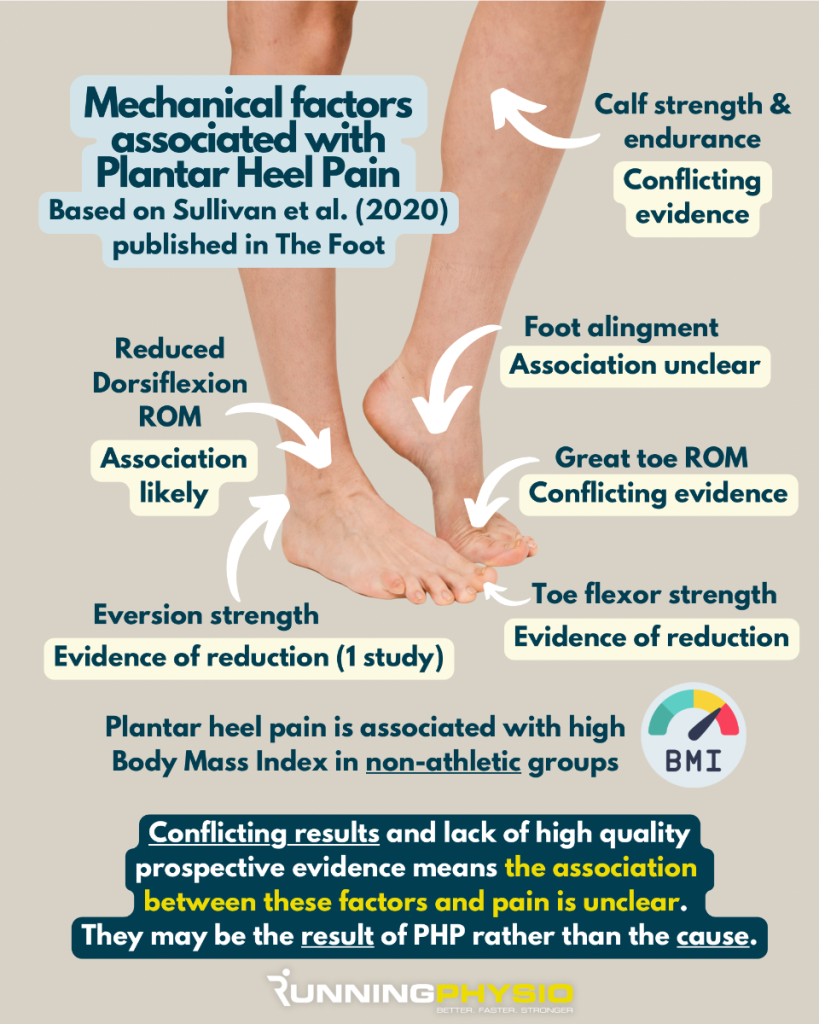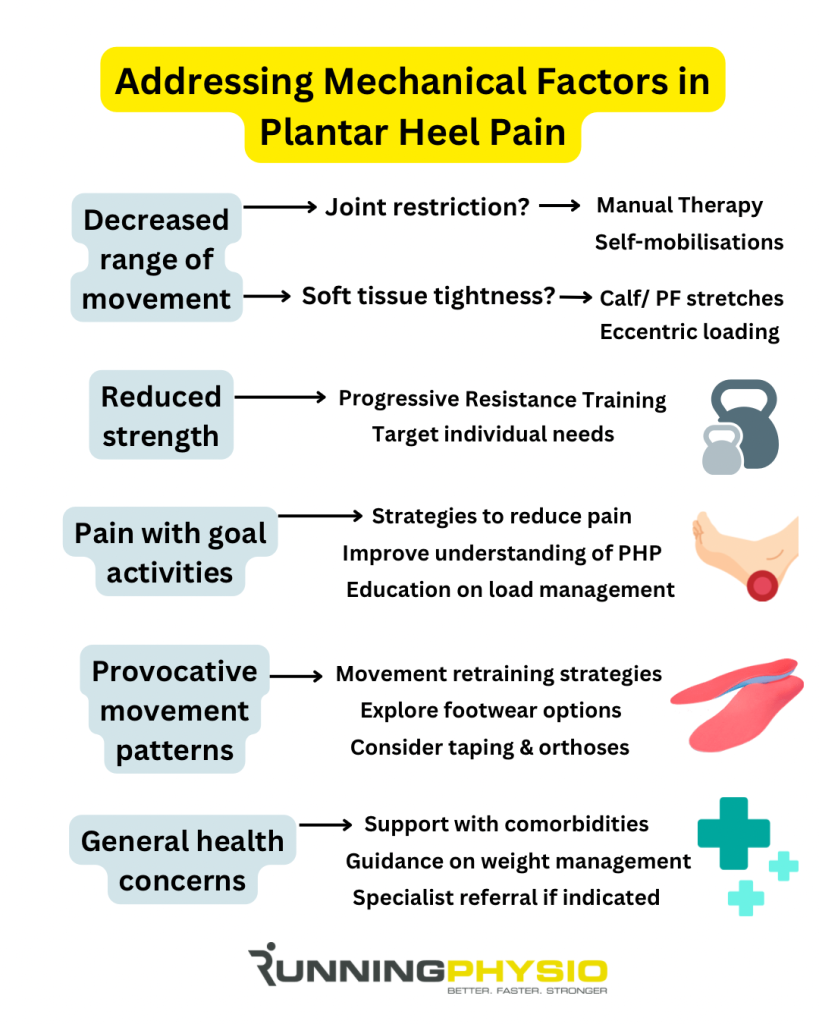Our articles should not designed to switch medical recommendation. When you’ve got an damage we advocate seeing a professional well being skilled. For extra info see out Phrases and Situations.
In at present’s weblog put up we’re going to reply 3 questions:
- What are the mechanical components related to Plantar Heel Ache (PHP)?
- Why are they essential?
- How can we tackle them in rehab?
First up, let’s have a look at the mechanical components in PHP. There’s a pleasant paper on this from Sullivan et al. (2020) which I’ve summarised for you within the graphic beneath:
As you’ll be able to see from the graphic the proof right here is combined, I think that is largely all the way down to particular person variation and the populations studied.
These are nonetheless areas which can be essential to evaluate as every can affect the load on the plantar fascia and subsequently be implicating in PHP. For instance decreased ankle dorsiflexion because of joint restriction or calf tightness:
“Lack of ankle dorsiflexion through the stance part of the gait cycle might doubtlessly result in a compensatory improve in midfoot dorsiflexion movement (41), basically reducing the arch additional and growing tensile load on the plantar fascia… it’s possible that elevated tensile load on the gastrocnemius-soleus advanced because of inflexibility might transmit on to the plantar fascia.” Sullivan et al. (2020)
Reference 41: M.A. Karas, D.J. Hoy Compensatory midfoot dorsiflexion within the particular person with heel wire tightness: implications for orthotic gadget designs J Prosthet Orthot, 14 (2002), pp. 82-93
Evidently affiliation is probably going with decreased ankle dorsiflexion and decreased toe flexor energy, and PHP has been linked with excessive BMI in non-athletic teams.
Sullivan et al. (2020) notice that the affiliation between heel ache and foot alignment is unclear, plus there may be restricted proof to counsel heel ache is related to working mileage or weight-bearing at work.
Essential to notice that ‘restricted proof’ doesn’t imply there isn’t an affiliation, simply that there presently isn’t a lot proof that conclusively exhibits what that relationship is.
I feel we’ve lined the primary 2 questions, so it’s on to query 3…
How can we tackle these components in rehab?
As with most circumstances, good remedy begins with evaluation! In sufferers with PHP, I’d sometimes embody the next:
- Energy testing – calf, ankle inversion and eversion, plus nice toe flexion
- Vary of motion – particularly ankle dorsiflexion and nice toe extension
- Static and dynamic foot posture – notably throughout purpose actions and aggravating components
- Exercise ranges and ache – discover every day actions and sport
- Footwear choices and symptom response – intention to determine the best choice for the affected person to assist cut back signs
- Basic well being and former medical historical past – focus on related comorbidities (which can embody weight administration)
I’m certain there are different choices that we might add to this checklist, together with psychosocial components, however what I’ve included above ought to enable you to determine which mechanical components could also be related to the person you’re seeing.
An individualised strategy is vital as PHP can have an effect on a broad vary of various folks and populations.
I’ve seen it in sedentary folks, athletes and ultra-endurance runners!
Listed here are some ideas on how we might tackle key components that we discover in our evaluation:
Many of those are according to the latest pointers we mentioned in final week’s weblog put up (insert hyperlink right here). Different remedy choices, similar to shockwav,e might be thought of, particularly if the approaches above haven’t been efficient.
A remaining level so as to add is that we’ve targeted on mechanical components right here. That time period, ‘mechanical’, at all times makes me really feel like we’re discussing machines! We’re not, we at all times deal with an individual relatively than a pathology, with biomechanics and loading being one a part of a a lot greater image!






